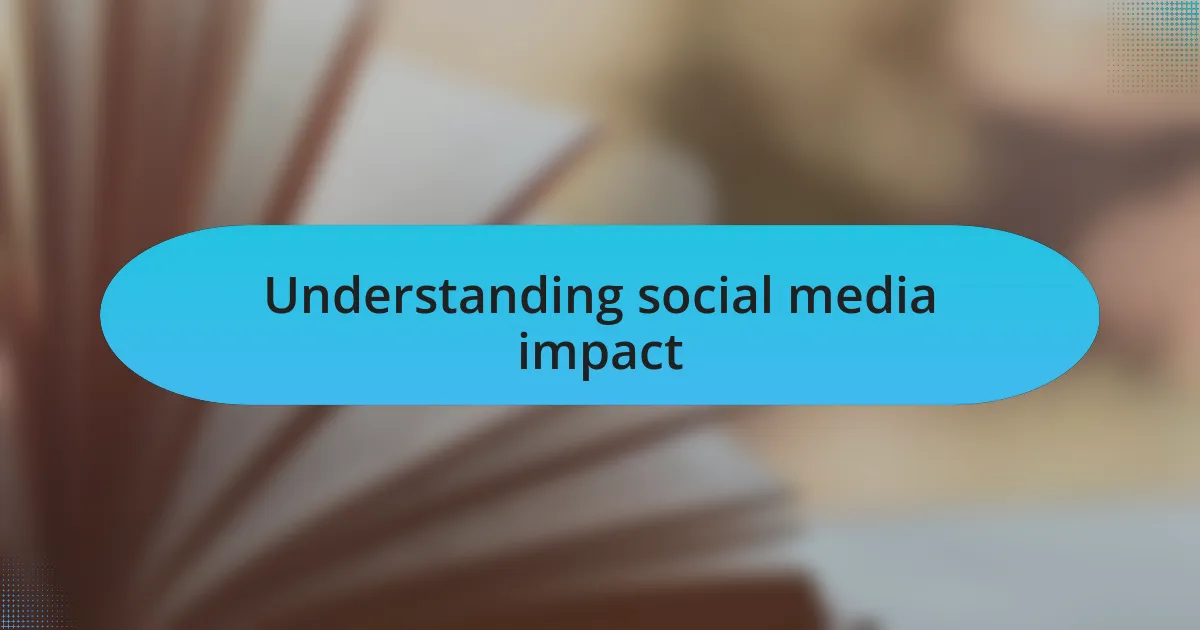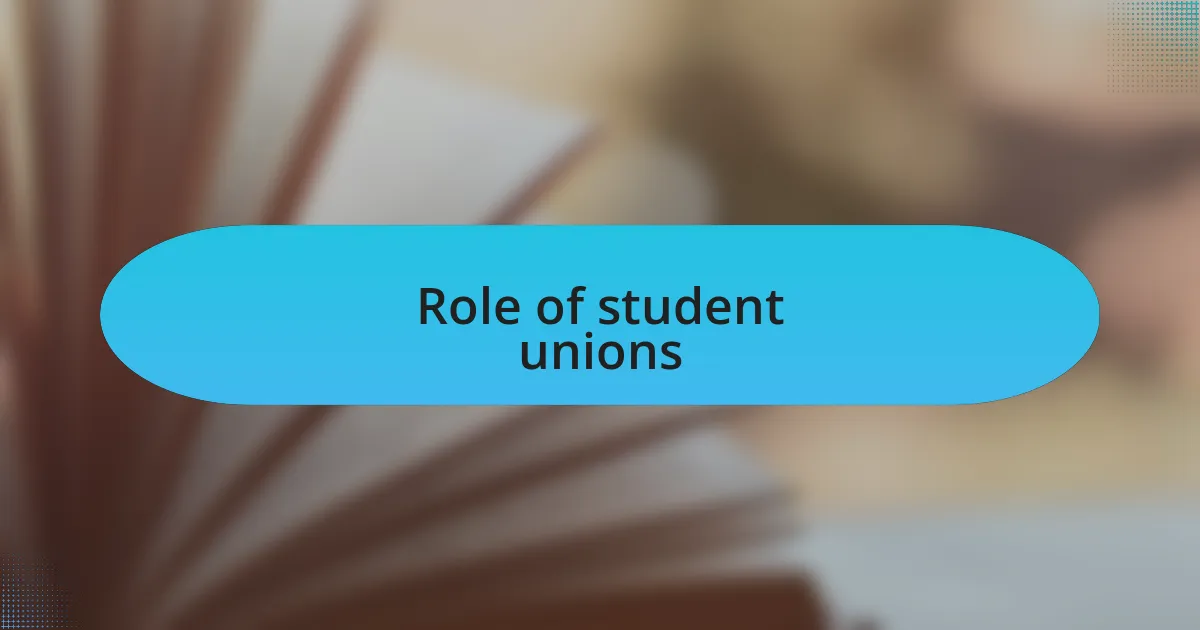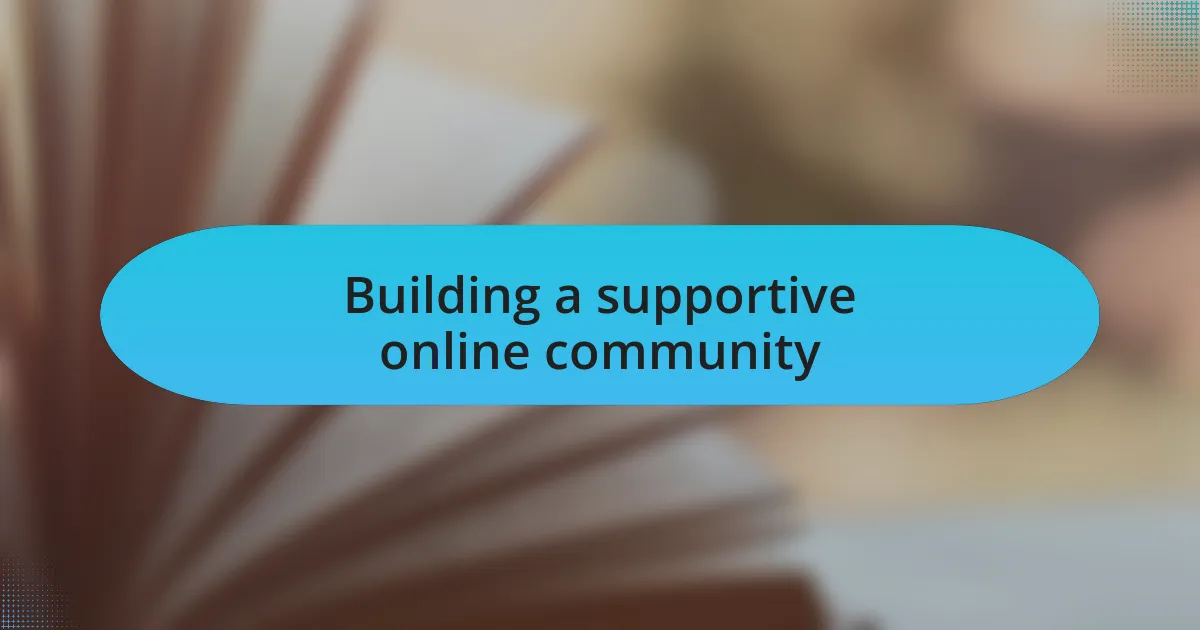Key takeaways:
- Social media can amplify important messages and build community, but it also risks spreading misinformation.
- Student unions empower students by bridging communication with administration and fostering collaboration on relevant issues.
- Effective social media engagement relies on authenticity, interactivity, and storytelling to create meaningful connections.
- Sharing personal success stories can inspire others, fostering a culture of growth and community support.

Understanding social media impact
Social media’s impact is undeniable; it shapes opinions and fuels movements. I remember a campaign I helped launch, where within days, our message reached thousands, sparking conversations that would not have happened otherwise. Can you imagine the power of a single tweet igniting a collective voice?
When I reflect on the time we organized a virtual event, the engagement we received was eye-opening. I learned how these platforms create a sense of community, drawing students together regardless of their geographical location. What if we harnessed that energy for meaningful change?
Through my experiences, I’ve realized that social media can be a double-edged sword. It can amplify important messages, but it can also spread misinformation. I often find myself pondering, how do we strike that perfect balance to ensure our voices are heard while maintaining the integrity of our messages?

Role of student unions
Student unions play a crucial role in empowering students and amplifying their voices on campus. I recall a time when our union gathered feedback on local issues affecting students, turning those concerns into actionable proposals. It struck me then how vital it is for unions to serve as a bridge between students and university administration; without that connection, many voices would go unheard.
In my experience, student unions are not just about representation; they create a space for growth and collaboration. For instance, I participated in a union-led initiative that brought together students from different backgrounds to discuss diversity and inclusion. The energy in the room was palpable, and it hit me how such gatherings foster a sense of belonging and inspire change both on campus and beyond.
Moreover, the initiatives led by student unions often resonate with broader societal issues, allowing us to engage in meaningful dialogue. As I reflect on the campaigns we implemented, it’s clear that our efforts didn’t just highlight student concerns; they provided a platform for students to take ownership of their experiences. Isn’t that the essence of what it means to be a part of a university community?

Strategies for social media engagement
Engaging on social media requires authenticity. I remember launching a campaign where I shared behind-the-scenes footage of our union meetings. The response was overwhelming; students appreciated the transparency and felt more connected to our initiatives. Isn’t it amazing how a simple glimpse into our work can foster a sense of community and trust?
Interactivity is another key strategy. During a virtual town hall, we used polls and Q&A sessions to encourage real-time participation. I noticed that when people feel their input matters, their engagement skyrockets. This creates a dialogue rather than a monologue, making students more likely to share their experiences and ideas.
Storytelling also plays a crucial role in social media engagement. I shared personal stories and testimonials from students who benefited from our initiatives. This approach turned statistics into relatable narratives, compelling others to join our cause. When we share our experiences, we’re not just communicating; we’re inviting others into our journey. How might your narrative become a catalyst for change?

Creating a campaign for change
Creating a campaign for change starts with identifying a cause that resonates deeply with your community. I remember pinpointing mental health awareness as a priority after countless conversations with classmates who felt isolated. By crafting a campaign around this issue, I opened the floor to discussions that were often silenced, revealing just how crucial these conversations were for many.
Once I had a clear focus, I knew it was essential to harness visual storytelling. I collaborated with fellow students to create impactful graphics and video messages that showcased real stories of resilience. Watching the reactions unfold, I felt a collective empowerment; we weren’t just raising awareness, we were igniting a movement. How powerful is it when people see their experiences reflected back at them?
Mobilizing support requires a clear call to action. In one campaign, we organized a week-long initiative where students shared their mental health journeys on various platforms. The use of a dedicated hashtag allowed us to track participation and create a sense of solidarity. I was amazed to see students rally behind this cause, as if each post became a thread weaving us together in a shared narrative of hope and change.

Building a supportive online community
Creating a supportive online community starts with fostering a space where every voice feels valued. During my time at the student union, I observed how a simple online forum blossomed into a safe haven for students to express their thoughts and experiences. I remember a fellow student sharing her struggles with anxiety; the outpouring of supportive messages that followed truly highlighted the power of connection.
Engagement thrives on empathy, and I learned that cultivating genuine relationships online can spark real change. I once initiated a live Q&A session where students could anonymously ask questions about mental health topics. The discussions that erupted were open and heartfelt, as if each participant felt the weight of their concerns lifted. Have you ever felt that sense of relief when discussing something you’ve kept quiet for too long?
Another vital element is consistency in communication. By regularly sharing resources, updates, and stories of progress through our online platforms, I witnessed our community’s trust in one another grow stronger. I remember checking in with participants after big events; the gratitude expressed in their responses reminded me how important it is to maintain those lines of connection. A community doesn’t just form overnight; it nurtures relationships over time.

Sharing personal success stories
Sharing personal success stories can be a game-changer in building that online community. I vividly recall a student who had struggled academically for years. When she finally shared her journey of persevering through setbacks, her story inspired a wave of encouragement, and many others revealed their challenges. Isn’t it incredible how one story can resonate with so many, reminding us that we’re not alone in our struggles?
The act of sharing personal triumphs isn’t just about boasting; it’s about forging deeper connections. During a social media campaign, I highlighted several students who had succeeded in various initiatives despite facing adversity. Their stories weren’t just testimonials; they were powerful narratives that infused hope and motivation throughout our community. How often do you find encouragement in someone else’s achievements?
Each shared experience has the potential to uplift and empower others, creating a ripple effect. I noticed that after one student shared his success in organizing a community event, it sparked a series of new initiatives led by others inspired by his efforts. Seeing how someone’s journey can kindle action in others reinforces the idea that collective strength comes from openness. Don’t you think it’s amazing how sharing personal stories can fuel a culture of growth and change?

Measuring social media effectiveness
When it comes to measuring social media effectiveness, I’ve found that engagement metrics are key indicators. For instance, after launching a campaign aimed at improving student mental health resources, I tracked likes, shares, and comments. Noticing a surge in interactions confirmed that our message resonated deeply with the audience and stimulated meaningful conversations.
I also remember a time when I used surveys to gauge the impact of a particular initiative shared on our platforms. By directly asking students about their perceptions and follow-up actions, I was able to gather insightful data. An overwhelming number of respondents reported taking steps towards seeking help after engaging with the campaign. Isn’t it fascinating how direct feedback can shape our understanding of what truly influences our peers?
Lastly, I believe that the sentiment analysis of comments can reveal the emotional tone of our online interactions. I often sift through responses to identify prevailing themes—whether they’re positive, negative, or neutral. During one particular campaign focused on campus inclusivity, the overwhelmingly supportive comments highlighted a hunger for more dialogue on the subject. How can we ignore the power of feelings in shaping our social initiatives? These insights show that measuring effectiveness goes beyond numbers; it’s about understanding the heart of our community.